

Magneto-Optics in Quantum Light and Matter

November 12 and 13, 2025



The history of magneto-optics—an area exploring the interaction between magnetic fields and light—dates back to the early 19th century. Its foundations werelaidin1845whenMichaelFaraday discovered the Faraday effect, observing that the plane of polarization of light rotates when it passes through certain materials under a magnetic field. This groundbreaking discovery provided the first direct link between light and electromagnetism, helping pave the way forJamesClerkMaxwell’selectromagnetic theory.
Throughthe20thcentury,magneto-optics evolvedalongsideadvancesinsolid-state physics, materials science, optics and lasertechnology,andquantummetrology.
The development of magneto-optical recording in the 1980s allowed for rewritable optical storage devices, influencing data storage technologies before the rise of hard drives and flash memory.Cyclotronresonanceandoptical spectroscopyunderhighmagneticfields revealed fundamental electronic properties of semiconductors and nanostructures, providing deep insights intoquantumeffectsandthebehaviorof charge carriers and quasiparticles in complexsystems.
Today,magneto-opticscontinuestothrive in nanotechnology, spintronics, optical sensing, and quantum science, offering insightsintoquantumlightandquantum matter. From Faraday’s experiments to modern ultrafast and nanoscale studies, magneto-optics remains a vital bridge between high magnetic field effects, magnetism, photonics, nanoelectronics, andquantumtechnologies.

Michael Faraday 1791 - 1867

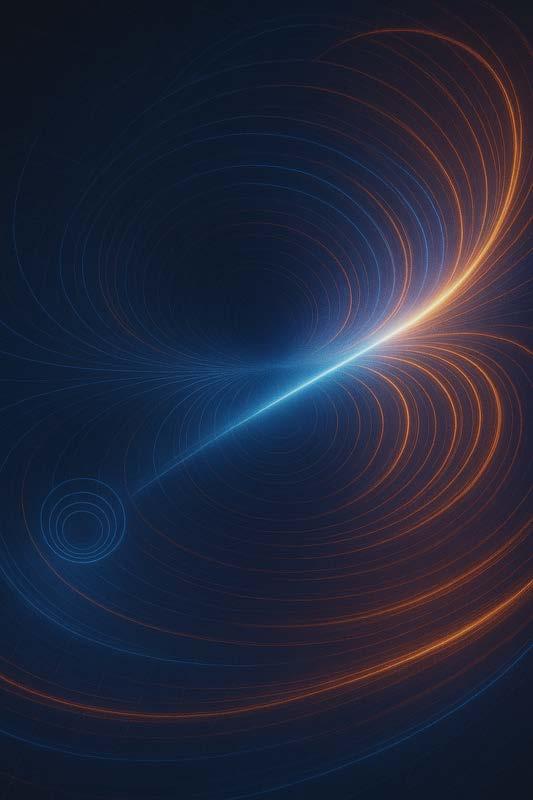
Introduction to the conference
THE CONFERENCE
About
TheMagneto-OpticsinQuantumLightandMatterConferenceisanintensivetwoday event dedicated to exploring the forefront research in magneto-optics –spotlightingitslatestadvancementsinthestudyofquantumlight,quantumstates of matter, and light-matter interaction in low-dimensional materials, especially phenomena emerging at experimental extremes (high magnetic fields, cryogenic temperatures, ultrafast timescales, and nanoscale spatial resolutions), while sparkingnewideasandcollaborations
Participants are welcome to join the guided tours of the Qlimate (Quantum Light and MatteratExtremes)facilityfeaturingtheQuantumDesignOptiCoolandtootherstate-ofthe-art quantum metrology laboratories within the Quantum Metrology Institute and the newly established Institute for Quantum Standards and Technology at the National PhysicalLaboratory.Theconferencewillprovideauniqueopportunitytoengagedirectly with the Quantum Design Q-Works team, innovators of the OptiCool system, and discoverhowstate-of-the-artinstrumentationisdrivingthefutureofmeasurementscience andquantumtechnologies.





NationalPhysicalLaboratory,Teddington
AT A GLANCE

Address
NationalPhysicalLaboratory, HamptonRoad,Teddington, MiddlesexTW110LW
Timings
Registrationopens09:00 Lunchis12:30-13:30 Dayends17:35/17:45
Arrival
Onthedayregistrationisatthe mainNPLreception.Pleasearrive atNPLviatheHamptonRoad entrance.Parkingislimitedand notbookable;pleaseusepublic transportifpossible.More informationisinthisbooklet.
IDisRequired
Youwillberequiredtobring photoidentificationtoconfirm youridentityatregistration.
ConferenceDinner
AttheParkHotel,Teddington, 19:00-22:30.Youwillhave chosenyourmenu preferences,butthereisa reminderinthisbooklet
PosterSubmission
Shouldyouwishtosubmita posterfordisplay,please contactAngelaCarslake angela@qd-uki.co.uk
QuantumDesignUKand Ireland(QDUKI)reservesthe right to use any photograph/videotakenat anyQDUKIeventwithout the expressed written permission of those included within the photograph/video.Wewill not, however, use identifyinginformationsuch as names or company/institution withoutyourpermission.
Organising Committee
Dr.NathanielJ.Huáng,NationalPhysicalLaboratory
Dr.LukeNicholls,QuantumDesignUKandIreland
Prof.MengkunLiu,StateUniversityofNewYorkat StonyBrook
Prof.DmitriBasov,ColumbiaUniversity
Dr.StefanoSpagna,QuantumDesignInternational
Dr.AlexeyKuzmenko,UniversityofGeneva
Dr.DenisBandurin,NationalUniversityofSingapore

Conference Programme
DAY ONE
09:00 - 09:30
09:30 - 09:55
Session 1
Arrival and Registration

Opening Remarks
Nathaniel Huáng (National Physical Laboratory, UK)
Dmitri Basov (Columbia University, USA)
Stefano Spagna (Quantum Design)
Nearfield Magneto-Optics, Landau-Level Nanoscopy
Chair:DmitriBasov(ColumbiaUniversity,USA)
09:55 - 10:20
Mengkun Liu (Stony Brook University, USA)
Recent advances in optical nanoscopy with quantum materials
10:20 - 10:45 Alexey Kuzmenko (University of Geneva, Switzerland)
Magneto-infrared spectroscopy of hBN encapsulated graphene: from the far-field to the near-field
10:45 - 11:15
Networking Break and Posters (refreshments)
Session 2
Antiferromagnets, Magnonics
Chair:AlexeyKuzmenko(UniversityofGeneva,Switzerland)
11:15 - 11:40
Robert Hicken (University of Exeter, UK)
Optical manipulation of magnetic order in antiferromagnetic CoO and NiO ultrathin films
11:40 - 12:05
12:05 - 12:30
Rostislav Mikhaylovskiy (Lancaster University, UK)
Coherent terahertz magnonics in antiferromagnets
Martin Veis (Charles University, Czech Republic)
Magneto-optical spectroscopy as a probe to electronic structure and magnetism of materials and nanostructures
12:30 - 13:30 Lunch

Session 3
13:30 - 13:55
Excitons and Quantum Light – part I
Chair:NathanielHuáng(NationalPhysicalLaboratory,UK)
Robin Nicholas (University of Oxford, UK)
Magneto-optical spectroscopy of single photon emission from new exciton states in Cove edged individual graphene nanoribbons
13:55 - 14:20
14:20 - 14:45
DAY ONE
Paulina Plochocka (LNCMI-CNRS, France & Wrocław University of Science and Technology, Poland)
Tuneable exciton physics in 2D semiconductors: from quadrupolar states in TMD bilayers to magnetic excitons in CrSBr
Ermin Malic (Philipps-Universität Marburg, Germany)
Microscopic modelling of magneto-optics and magneto-transport in 2D perovskites
14:45 - 15:00 Zhe Li (Heriot-Watt University, UK)
Band structure and confined interlayer excitons in switchable ferroelectric R-WSe₂ bilayers
15:00 - 16:00 Networking Break, Posters, Lab Tour (refreshments)
Session 4
16:00 - 16:25
Special and Contributed Talks
Chair:LukeNicholls(QuantumDesign)
Mete Atatüre (University of Cambridge, UK) [S6]
Seeing the nanoscale: imaging the magnetic realm using diamond quantum magnetometry
16:25 - 16:50 Siqiu Guo (Light Publishing Group)
Light is beyond a journal
16:50 - 17:05 Alberto Brambilla (Politecnico di Milano, Italy) [S2]
Magneto-optical investigations of spinterfaces
Francesco Pineider (University of Pisa, Italy) [S3]
17:05 - 17:20
Magneto-optical phenomena in molecule-nanostructure hybrids
17:20 - 17:35 Jesus Iñarrea (Universidad Carlos III, Spain)
Cat states in dark and irradiated 2D magnetotransport
19:00 - 22:30 Conference Dinner

The Park Teddington, 19 Park Road, Teddington, TW11 0AB
19:00 - 19:45 Welcome Drinks and Canapes
19:45 - 22:30 Conference Dinner
DAY TWO
08:30 - 09:00
Arrival and Registration

Session 5
Ultrafast Dynamics of Quantum Matter Chair:MengkunLiu(StonyBrookUniversity,USA)
09:00 - 09:25 Enrico Da Como (University of Bath, UK)
Charge densitywave dynamics in 2D materials at the femtosecond timescale
09:25 - 09:50 Gregor Jotzu (EPFL, Switzerland)
Probing driven materials with ultrafast proximate magnetometry atthesub-picosecondandnanometerfrontiers
09:50 - 10:15 Sam Shallcross (Max Born Institute for Nonlinear Optics and Short Pulse Spectroscopy, Germany) Femto-phono-magnetism
10:15 - 10:45
Networking Break & Posters (refreshments)
Session 6
Towards Quantum Technologies: Sensing, Communication, Computing Chair:NathanielHuáng(NationalPhysicalLaboratory,UK)
10:45 - 11:10 Clément Faugeras (LNCMI-CNRS, Université Grenoble Alpes, France) [S8]
Magneticorderinanair-stablefrustratedvanderWaalsmagnet
11:10 - 11:35 Paolo Vavassori (CIC nanoGUNE, Spain)
Amplification of magneto-optical activity through plasmonic modeshybridization
11:35 - 12:00 Dorian Gangloff (University of Cambridge, UK) Tamingspinsinsemiconductorquantumdots
12:00 - 12:15 Monika Tomczyk (ENSEMBLE3 Centre of Excellence, Poland) Possibilities for new magneto-optic materials for quantum technologies
12:15 - 12:30 Mark de Quidt (Cardiff University, UK) Europiummonoxideasamagneto-opticmaterial
12:30 - 13:30 Lunch

Session 7
DAY TWO
Topological States and Topological Magnetism
Chair:AlexeyKuzmenko(UniversityofGeneva,Switzerland)
13:30 - 13:55 Tomasz Smoleński (University of Basel, Switzerland)
Opticalcontroloftopologicalmagnetism in moiré materials
13:55 - 14:20 Milan Orlita (LNCMI-CNRS, France)
Magneto-opticalstudies oftopologicalmaterials
14:20 - 14:45 Felix Schilberth (Universität Augsburg, Germany)
Identification and manipulation of a nodal line resonance by highfield magneto-optics
14:45 - 15:10 Junbo Han (Huazhong University of Science and Technology, China)
Manipulating of magnetism and magneto-optical properties of 2D van derWaals heterostructures
15:10 - 15:40 Conference Photo, Networking Break, Posters, Lab Tour (refreshments)
Session 8
15:40 - 16:05
van der Waals Magnets
Chair:MengkunLiu(StonyBrookUniversity,USA)
Darius Choksy (Quantum Design) [S4]
OptiCool Vector update and a highlight of recent works in the OptiCool
16:05 - 16:30 Maciej Dabrowski (University of Exeter, UK)
All‐opticalcontrolofspins invan derWaals magnets
16:30 - 16:45` Nimrod Bachar (Ariel University, Israel)
Direct magneto-optical evidence for Kitaev interactions in the van derWaals multiferroic NiI2
Session 9
Excitons and Quantum Light – part II
Chair:NathanielHuáng(NationalPhysicalLaboratory,UK)
16:45 - 17:10 Antonio Polimeni (Sapienza University of Rome, Italy)
Interlayer exciton localisation and moiré exciton detrapping probed by magneto-photoluminescence spectroscopy in twodimensionalheterostructures
17:10 - 17:30 Zhuo Yang (University of Tokyo, Japan)
Magneto-opticalprobing ofexcitonic states upto 600T
17:30 - 17:45 Awards & Closing Remarks

Organizing Committee


Practical Information
GETTING HERE

Address:
NationalPhysicalLaboratory
HamptonRoad
Teddington
Middlesex TW110LW
(Pleasenotethatthemain entrancetoNPLison HamptonRoad)
We endeavour to be a disability-friendly site, but if you require any reasonable adjustmentstobemadeprior to your visit or have any questionspleasecontactus.
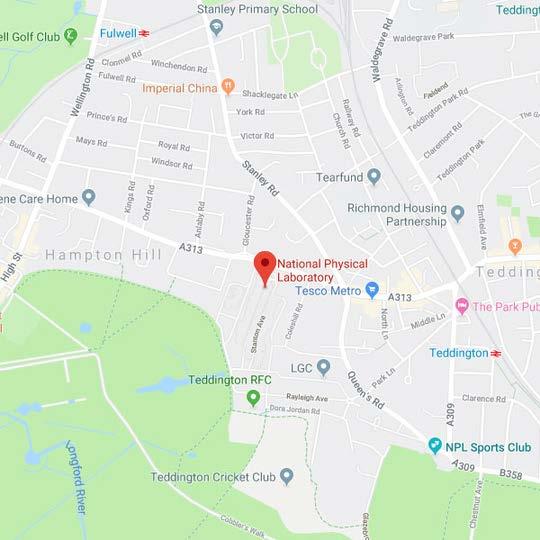
By car
Our Teddington site sits within the UltraLow Emission Zone (ULEZ), if your vehicle doesn't meet the ULEZ emissions standards and is not exempt, you will need to pay a £12.50 daily charge to drive within the zone. You can check your vehicle and find out more details on the Transport for LondonUltraLowEmissionZonewebsite.
Parking at NPL is limited. If arriving by car, please park temporarily in the visitor car park at reception to collect your parking permit and visitor pass. You will then need to repark in one of the main car parks. Parking is on a first come basis and cannot be reserved. Directions to the car park will beprovidedonarrival.
Public transport
Buses: 33, 281, 285, 481, R68 and SL7 all serveTeddington. Please note that local buses do not accept cash. See the TfL website for accepted paymentmethods
Trains: Regular services connect Teddington with London Waterloo in approximately 30 minutes.
From Heathrow: Routes 285, and the faster SL7 both connect Teddington with Heathrow Airport. A taxi journey will take approximately 30minutes.
Use the TfL journey planner to help plan your journey.
EmergenciesDial (3333)
Dial3333(fromanyinternalphone)for help in any emergency. This number is operational24hoursaday.Youshould bepreparedtogiveanyrelevantdetails suchas:
•Thenatureoftheemergency.
•Thelocation.
•Yournameandthetelephone extensionnumberyouareusing.
NPL-Guest Wireless network for visitors
To connect to the guest network: 1. Connect to the NPL-Guest wireless network2.Openyourinternetbrowser 3. Follow the on screen instructions by providing the relevant information. Pleasereportanyproblemsconnecting to this network to the IT Helpdesk on 02089436000.
Site information and security
The NPL site speed limit is 20 mph. There are many blind corners and concealed turnings so please reduce your speed and be vigilant. Vehicles must be parked in designated areas only. NPL site working hours are normally between 08.30 and 17.30 Monday to Friday. Visitors should be escorted at all times and for their own safetymustobeythesignagedisplayed on laboratory doors. All visitors are provided with a visitor pass at reception; this must be worn in a prominent position. Visitors may only usecameraorvideoequipmentatNPL with the express permission of their hosts.
Please remember...
Youwillberequiredtobringphotoidentificationto confirmyouridentityatregistration.
eduroamisalsoavailableatNPL
If you’re reading this ahead of the event...
Thereisstilltimetosubmitaposter.
If you are planning to submit a poster for the conference, please ensure that your submission meets the required format and quality standards. All posters will be displayed on digital totems, so it is essential that images and graphics are in high resolutiontomaintainclarityonlargescreens.
Please contact Angela Carslake by email angela@qduki.co.ukforthetemplate
DEADLINE: Monday, 3 November
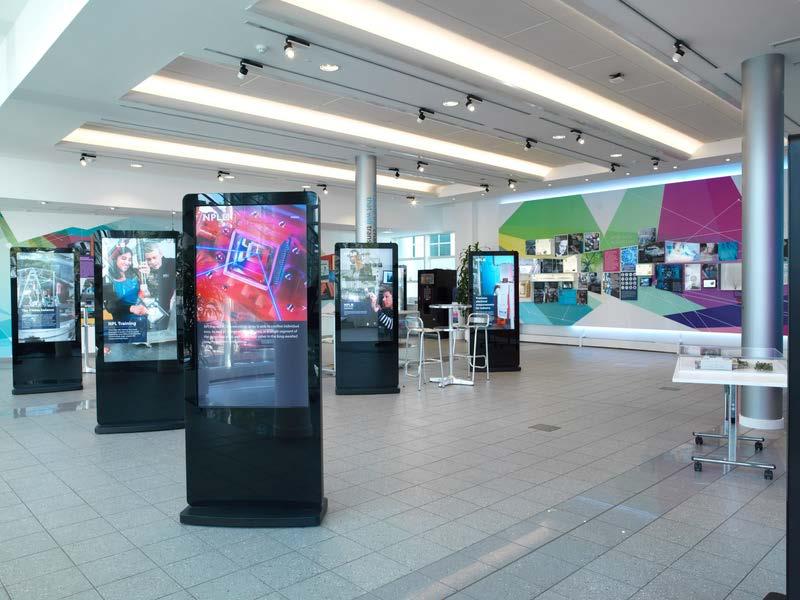

DINNER
PARK HOTEL | TEDDINGTON 12 NOVEMBER 2025 | 19:00 - 22:30


IYQ RECOGNIZES 100 YEARS SINCE THE INITIAL DEVELOPMENT OF QUANTUM MECHANICS
IYQbeganasagrassrootsmovementamong asmallnumberofscientists,educators,and historians who recognized that the centennial of quantum mechanics in 2025 wouldbeaperfectoccasiontohelpbroaden public understanding of how central quantum science and technology has becometohumanityoverthepast100years and how its impact will likely only increase over the next 100 years. Word quickly spread among an international network of like minded individuals who began approaching scientific societies and developedasetofguidingprinciples forall those working on planning a public-facing quantumcentennialcelebration.

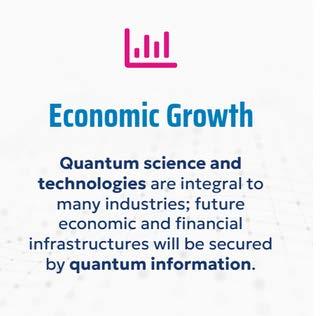





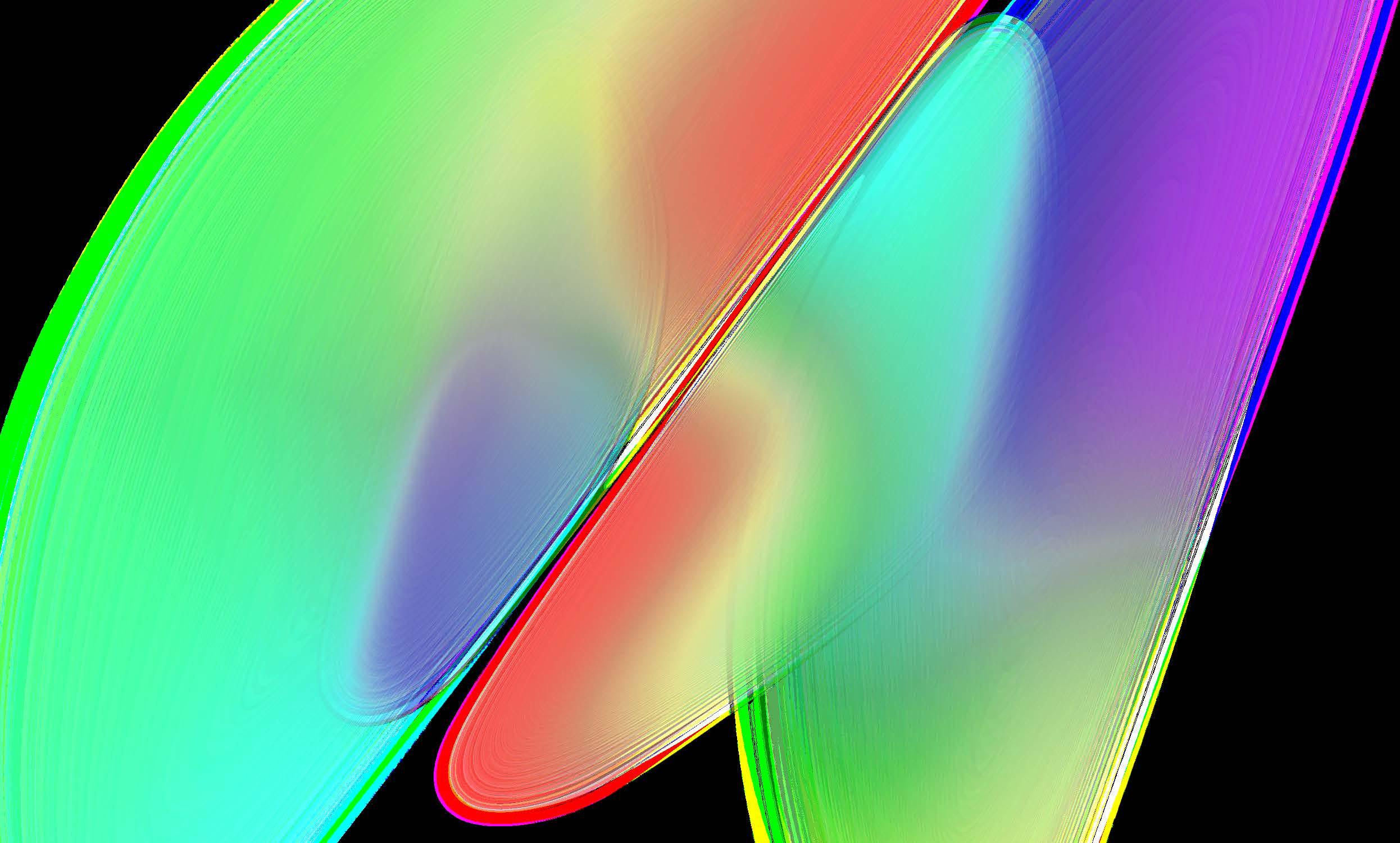

Hosts Information
19 HOST PROFILE


For more than 40 years, Quantum Design (QD) has been providing technologysolutionstoresearchers in the fields of physics, chemistry, biotechnology, materials science, andnanotechnology.Establishedin 1982 in San Diego, California, Quantum Design is the leading commercial source for automated materials characterization systems offering a variety of measurement capabilities.
QDinstrumentsarefoundinthe world’s leading research institutions and have become the reference standard for a varietyofmagneticandphysical propertymeasurements.



Quantum Design instruments are cited in, and provide the data for, more scientific publications than any other instrument in the fields of magnetics andmaterialscharacterisation.
An essential part of providing scientific solutionstoresearchersaroundtheglobeisto also offer state-of-the-art instruments from other leading manufacturers. These manufacturers are chosen by QD not only for their innovative products, but also because they believe in the same level of customer satisfaction and support that scientists have cometoexpectfromQDproductsworldwide.
With headquarters in the USA, and offices in Belgium, Brazil, China, Czech Republic, Germany,France,Hungary,India,Italy,Japan, Korea, Poland, Romania, Singapore, Spain, Sweden, Switzerland, Taiwan, Turkey, and the UnitedKingdom,QDisstrategicallylocatedin the world’s key centers for scientific research, providinglocalmarketing, sales,andtechnical support.


A Magneto Optical Cryostat with
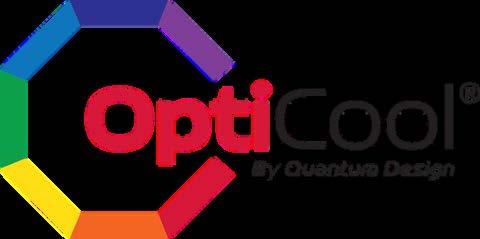
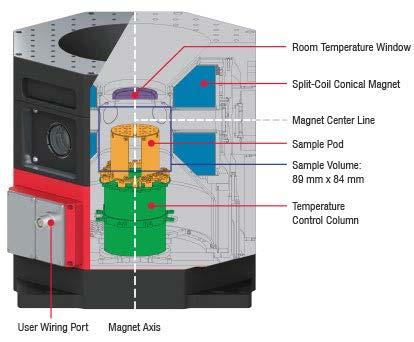

NPLprovidesthemeasurement capabilitythatunderpinstheUK's prosperityandqualityoflife

The National Physical Laboratory (NPL) is theUK's NationalMetrology
Institute (NMI), developing and maintaining the national primary measurement standards, as wellas collaborating with other NMIs to maintain theinternational systemof measurement.
As a public sector research establishment, we deliver extraordinary impact by providing the measurement capability that underpins the UK's prosperity and quality of life
We develop the metrology required to ensure the timely and successfuldeployment of new technologies and work with
organizations as they develop and test new products and processes.

I believe that in the National Physical Laboratory we have the first instance of the State taking part in scientific research. The object of the scheme is, I understand, to bring scientific knowledge to bear practically upon our everyday industrial and commercial life; to break down the barrier between theory and practice; to effect a union between science and commerce."
HRHThe Prince ofWales – 1902
NPLwasfoundedin1900for"standardising and verifying instruments, for testing materials, and for the determination of physicalconstants."Weareoneoftheoldest standardisinglaboratoriesintheworld.
HISTORY
Now an established world-class centre of excellence, we maintain the UK’s primary standards of measurement, while simultaneousl delivering innovations to delivering innovations to improve prosperity andqualityoflifeforthoselivingintheUK. Almost 125 years since we were first established,westillremaintruetoourcore mission.
Sinceitsestablishment,theresearchworkat NPL has included all branches of physics, light, electricity and magnetism, radio communication, engineering, metallurgy, aeronautics and ship design. Some of the world’s most significant innovations have origins at NPL, including radar; packet switching,theforebeareroftheinternet;the ACE computer; and the caesium atomic clock.
Many of the world’s most renowned scientists have worked at NPL, including Robert Watson-Watt, Donald Davies, Alan TuringandLouisEssen
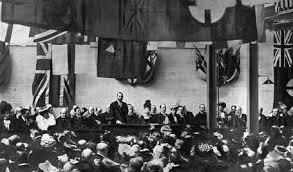


LastYear’s Magneto-Optics in Quantum Materials Conference RECAP
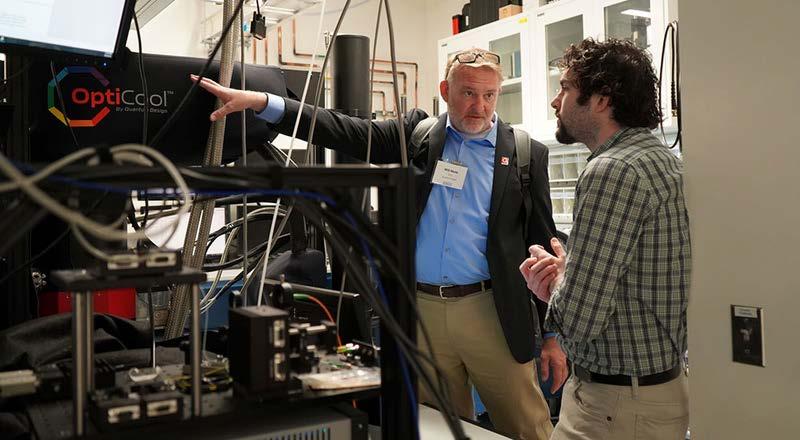
On September 9-10, Quantum Design, in partnership with The Chicago Quantum Exchange and Lake Shore Cryotronics, hosted the first-ever "Magneto-Optics in Quantum Materials Conference" along with the inaugural OptiCool user meeting at the University of Chicago. The two-day event featured cutting-edge advancements in magneto-optics, ultrafast phenomena in magnetic fields, and scanning probe nanoscopyinquantummaterials.
This conference originated from an idea proposed by Prof. Liu from the State UniversityofNewYorkatStonyBrookback in December 2023. A leader in lowtemperature nanoscopy and a committed OptiCool user, Prof. Liu was instrumental in shapingtheevent.Wearedeeplythankfulfor his exceptional leadership. We also extend our gratitude to our distinguished scientific committee—Professors David Awschalom (University of Chicago), Dmitri Basov (Columbia University), and Richard Averitt (UCSD)—whose expertise and guidance werevitaltotheconference'ssuccess.
Special recognition goes to Andrea Jett, DavidShimomura,Dr.KateTimmerman,Dr. Rick Hapanowicz, Jesse Gallop, and Michelle Lehman for their hard work in makingthiseventpossible.
One of the conference highlights was the research laboratory tours at the Pritzker SchoolofMolecularEngineering,includinga visittotheOptiCoolResearchLaboratory—a state-of-the-artfacilitydedicatedtoadvancing quantum materials research and education. This laboratory, part of a collaboration between the Quantum Design Discovery Teaching Laboratory and the Chicago Quantum Exchange, promises to make a significantimpactonthefuturegenerationof quantumresearchers.
Weareexcitedtoseethispartnershipcome to life and thank Prof. Awschalom for spearheading the transition of quantum informationsciencefromthelabtopractical, real-worldapplications.





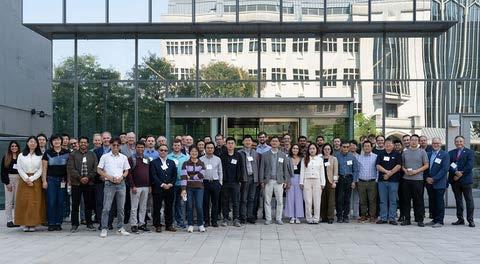
With over fifty scientific publications using data from the OptiCool measurement system, the conference provided ample opportunities for indepthdiscussions.Attendeesengaged withthepresentations,networkedwith peers, and shared their latest unpublishedresultforthefirsttime.More than just a knowledge-sharing platform, the event aimed to inspire fresh ideas, foster collaborations, and driveinnovationinthefield.
Tofurtherfuelinnovation,theQuantum Design Q-Works team, composed of Dr. Randy Black, Dinesh Martien, and Dr, William Neils, the brilliant minds behind the OptiCool system, were presentattheconferenceandeagerto gather feedback for future developments, including new customizations, measurement modes, andhardwareconfigurations.
“These kinds of
focused
meetings are my favorite. It was a very interesting two days, and I look forward to future versions of it.”
Prof.PeterArmitage JohnsHopkinsUniversity
The conference first day concluded with a reception, offering a fantastic opportunity for networking and for QuantumDesign'sCEOGregDeGeller and VP Stefano Spagna to present Prof. Mengkun Liu with a recognition prize for his pioneering research and inspiring leadership in the field of Magneto-OpticsinQuantumMaterials.


Quantum Design
will be at
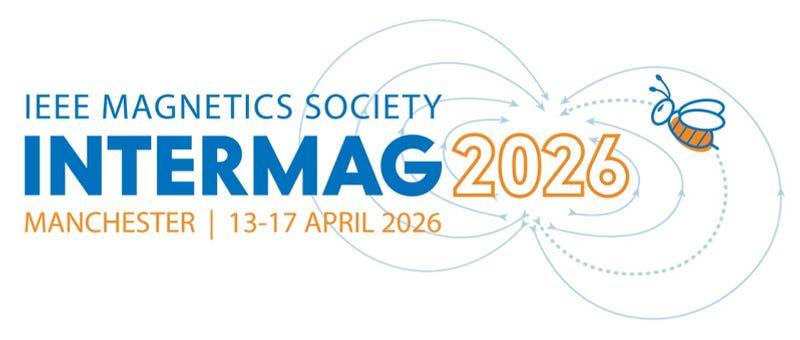
The program will consist of invited and contributed oral and poster presentations covering the full range of interests of the IEEE Magnetics Society from electric machines to spintronics and quantum technologies, from experimental work to simulation andcomputationalmodelling.
Learnmore

Sponsors Information

GordonandBettyMooreestablishedthe foundationtocreatepositiveoutcomesfor futuregenerations.Inpursuitofthatvision, we advance scientific discovery, environmental conservation, and the specialcharacteroftheSanFranciscoBay Area.”
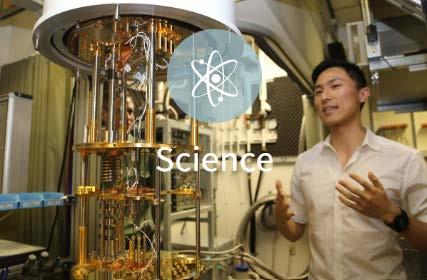
moore.org

News and commentary for the global scientific community


PhysicsWorldistheworld'sleading physics magazine. Published every month, it is available to all members of the Institute of Physics,aleadingscientificsociety that works to advance physics for thebenefitofall.
Physics World helps scientists working in academic and industrial research stay up to date with the latest breakthroughs in physics and interdisciplinary science. We provide an international readership with a uniquemixofdailynews,opinionand analysisfromanaward-winningteam ofsciencewritersandeditors.”

Each issue of Physics World covers the big stories and key issues that matter to scientistsinallpartsoftheworld,including features from acclaimed physicists and science writers, comprehensive news and analysis,and incisive opinion pieces. Every month you’ll also find valuable careers advice,reviews of the best new books,and updates on the latest research breakthroughs and physics-based technologies.

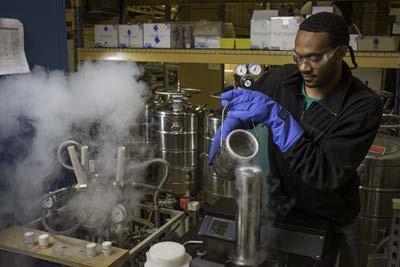










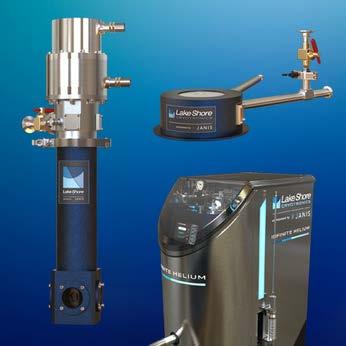






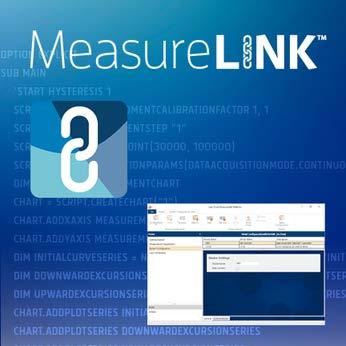
Lake Shore M81 to OptiCool Connection
The Lake Shore M81 Synchronous Source Measurement unit’s flexible measurement capabilities combined with the highly customizable Quantum DesignOptiCoolallowsforavarietyofelectricalmeasurementsunderoptical excitationatlowtemperaturesandhighmagneticfields.
The M81 uses BNC connections to interface with the Lake Shore BNC Breakout box, which then connects to the OptiCool’s Standard Sample Wiring via a 16-pin Fischer to DB-25 samplecable(3318-404-01).
RequiredMaterials
a.LakeShoreM81SynchronousSource Measurementunitanddesiredsource andmeasurementmodules
b.LakeShoreBNCBreakoutBoxtoDB-25
c.OptiCoolwithX300StandardSampleWiring d.16-pinFischertoDB-25samplecable (3318-404-01)
e.Optional:WiredSampleMountKit(X150)






Abstracts

Invited & Contributed
1Recentadvancesinopticalnanoscopywith quantummaterials I

In this talk, I will introduce two emerging optical nanoscopy techniques and the new science they enable. These techniques, namely magneto-scanning near-field optical microscopy (mSNOM) and BOlometric Superconducting Optical Nanoscopy (BOSON), can dramatically expand our ability to probe quantum materials at the nanoscale. Using m-SNOM, we demonstrate Landau-level nanoscopy that directly visualizes Landau quantization and magneto-polariton formation with 10 nm spatial resolution. A waveguide quantum electrodynamics (QED) framework reveals spatially resolved hybridization between magnetic excitations due to Landau level transitions and phonon polaritons, yielding universal scaling behaviors and design principles for nano-cavities with tunable light–matter coupling. With BOSON, we integrate superconducting transition-edge sensors with near-field optics to achieve ultra-sensitive detection of nano-light at below nanowatt power levels. This platform enables nanoscale imaging of Cooper pair dynamics and confined bosonic modes in low-dimensional systems, offering a new pathway toward quantum-limited spectroscopy and single-polariton detection. I will conclude by discussing future directions, including the integration of these techniques for exploring THz quantum optics, polaritonic circuitry, and strongly correlated quantum phases in complexmaterials.

2Magneto-infraredspectroscopyofhBN encapsulatedgraphene:Fromthefar-fieldtothe near-field
Alexey B. Kuzmenko University of Geneva, Switzerland
The combination of low cyclotron mass and high carrier mobility in Dirac semimetals makes magneto-infrared spectroscopy a particularly powerful tool for probing their fundamental electronic properties. While most studies to date have employed conventional far-field illumination and detection, recent work by Prof. Mengkun Liu’s group (SUNY) has demonstrated the remarkable potential of near-field approaches for investigating magneto-optical properties atthenanoscaleandforlargein-planelightmomenta.
In this talk, I will compare results obtained from far-field and near-field magneto-optical Landau-level spectroscopy and microscopy of hBN-encapsulated graphene, with particular emphasis on the coupling between Landau-level excitons in graphene and phonon-polaritons inhBN. [1] [2,3]
[1] I.O. Nedoliuk et al, Colossal infrared and terahertz magneto-optical activity in a two-dimensional Dirac material, Nature Nanotechnology 14, 756 (2019)
[2] M. Dapolito et al., Infrared nano-imaging of Dirac magnetoexcitons in graphene. Nature Nanotechnology, 18, 1409 (2023).
[3] L. Wehmeier et al., Landau-phonon polaritons in Dirac heterostructures. Science Advances, 10, eadp348 (2024).
3Opticalmanipulationofmagneticorderin antiferromagneticCoOandNiOultrathinfilms

Cubic CoO and NiO are among the best known layered antiferromagnets (AFM) with their magnetic structure and spin wave excitations having been studied by neutron scattering . The AFM resonance modes of bulk crystals have also been studied in all-optical pump-probe measurements in which the Faraday and Cotton-Mouton effects are used to probe spin precession induced by the associated inverse effects .However, much less is known about the magnetic order and spin excitations in CoO and NiO ultrathin films, where epitaxial strain can lead to strongly modified magnetic anisotropy , and the AFM domain structure can be difficult to image and control. We present measurements of epitaxial multilayered structures deposited on MgO(001) structures. We show that AFM domains may be readily imaged via the magneto optical birefringence (MOB) arising from the strain associated with magnetic order. Furthermore, when the AFM is in direct contact with a ferromagnetic layer, the interlayer exchange coupling can allow the AFM domain structure to be controlled by application of an applied magnetic field. When the AFM is in contact with a metallic layer, ultrafast laser pulses modify the static magnetic order with sensitivity to both the helicity of the pulses and the direction in which a focused beam is swept. Time resolved measurements of the MOB reveal the quenching of the magnetic order. Finally, in certain CoO/NiO/Fe structures precessional modesareobservedatfrequenciesofapproximately30GHzand0.75THzthatareunderstood in terms of the hybridization of the uniform precessional mode of the Fe with the so-called out of plane linearly polarised mode of the NiO. Such measurements provide new insight into the magnetic properties of ultrathin AFM layers and how their magnetic order may be manipulated usingonlylight.
References:
[1] M. T. Hutchings and E. J. Samuelsen, Phys. Rev B 6, 3447 (1972).
[2] C. Tzschaschel et al., Phys. Rev. B 95, 174407 (2017).
[3] T. Satoh et al., Nature Commun. 8:638 (2017).
[4] J. Li et al., Phys. Rev. B 84, 012406 (2011).
4CoherentTerahertzMagnonicsinAntiferromagnets

Magnonics aims to employ quanta of spin waves, magnons, to carry, transport and process information, avoiding the dissipation of energy inherent to electronics. Experiments on magnons in regular (ferro)magnets have yielded demonstrations of basic logic devices, albeit macroscopic (mm-scale) in size and operating at GHz frequencies. Recently, the spotlight has shifted towards the use of antiferromagnets, in which neighbouring spins are aligned antiparallel to each other. This alternating order leads to significantly higher spin wave propagation velocities and might enable devices operating at terahertz (trillion of hertz) clockrates. However, the absence of the net magnetization also makes antiferromagnets magnetically ‘invisible’: it is very hard to detect and influence the antiferromagnetic order. Yet, in some antiferromagnets strong spin–orbit coupling results in canting of the spins, thereby producing net magnetization. The canted antiferromagnets combine antiferromagnetic order with phenomena typical for ferromagnets and hold a great potential for spintronics and magnonics. In this way they can be identified as closely related to the recently proposed novel class of magnetic materials, called altermagnets. In my talk I will discuss a new functionality of canted antiferromagnets and altermagnets for magnonics and show that these materials facilitate mechanisms allowing to generate, detect and convert propagating magnons at the nanoscale [1-3]
References:
[1] J. Hortensius, et al. Nature Physics 17, 1001 (2021);
[2] R. Leenders and R. Mikhaylovskiy. Phys. Rev. B 107, 094423 (2023);
[3] R. Leenders, D. Afanasiev, A. Kimel, and R. Mikhaylovskiy. Nature 630, 335–339 (2024).
5Magneto-opticalspectroscopyasaprobeto electronicstructureandmagnetismofmaterialsand nanostructures

Abstract:
Magneto-optical effects play an important role in both research and application fields. Magnetooptical experiments are widely used as non-destructive, depth sensitive and extremely precise tools to explore basic and novel physical phenomena and properties of magnetic materials. Magnetic field dependent magneto-optical measurements under different field orientations can provide a useful insight into the magnetic anisotropy of studied materials even for very small magnetisations. On the other hand, one can use spectrally dependent measurements in combination with ab-initio calculations to analyse electronic transitions across the band structure to map particular electronic states with large splitting. Moreover, a combination of the field and spectrally dependent magneto-optical measurements, which gives energy dependent hysteresis loops, can provide useful insight into the magnetism of various sublattices in multisublattice magnetic systems, interface phenomena or surface magnetism. The talk will provide an overview of the recent magneto-optical research in the field of ferrimagnetic garnets for integrated photonics, altermagnetic candidates, 2D and non-collinear antiferromagnetic materials. It will also sketch new possibilities and opportunities to produce the next generation ofspin-controlledphotonicdevices.

6Magneto-opticalspectroscopyofsinglephoton emissionfromnewexcitonstatesinCoveedged individualgraphenenanoribbons
RJ Nicholas, BK Sturdza, RA Taylor, MK Riede, F Kong, X Yao and L Bogani, Physics Dept., Materials Dept., Oxford University, UK | Wenhui Niu, Ji Ma, XinLiang Feng, TU Dresden, Dresden Germany, MPI Microstructure Physics, Halle, Germany | A Pawbake, C. Faugeras, EMFL, Grenoble, France
We have recently demonstrated a dramatic improvement in the optical properties of graphene nanoribbons using chemically synthesized ribbons which have a well-defined structure and width. Adding a regular side chain to the ribbon creates a one dimensional superlattice and strongly inhibits aggregation. As a result, we see narrow excitonic ZPL (Zero Phonon Line) emission from thin films as described in our latest work (Sturdza et al, Nat. Comms. https://doi.org/10.1038/s41467-024-47139-1) and most recently in ribbons deposited on silicon where the ribbons lie flat to the surface. Spatially imaged individual ribbons can have linewidths down to 24 μeV at low temperatures (6K), and show characteristics of single photon emission such as anticorrelated spectral diffusion between sets of emission lines. The cove-edge superlattice structure strongly brightens the emission by folding and mixing the nanoribbon dispersion (figure above) creating newly emissive ‘Twilight States’. Applying a magnetic field introduces the equivalent of a Rashba shift to the two opposite edge-states which generates a spin polarization across the ribbon, and shifts and splits the dispersion relations of the superlatticesignificantly(Doetal,PRB103.115408,2021).
The superlattice unit cell is 0.8 x 1.2 nm giving the potential for magnetic commensurability (Hofstatter type) oscillations, and is a similar area to the cross section of single wall carbon nanotubes where we have seen large Aharonov-Bohm type effects. We have studied the ribbons in magnetic fields up to 30T where they show unusual negative diamagnetic shifts and splittings of order 100 – 500 μeV which are ribbon dependent and where the magnetic field controls the emission intensity and spectral diffusion suggesting interactions with dark exciton states. The figures below show examples of some of the spectral diffusion behavior with anticorrelated emission energies and constant emission intensities which give a Mandel parameter QcorrespondingtoanalmostidealPoissoniandistributionofdetectorshotnoise.


7TuneableExcitonPhysicsin2DSemiconductors:
FromQuadrupolarStatesinTMDBilayerstoMagnetic ExcitonsinCrSBr

2D layered semiconductors emerged as ideal playground to study exciton physics due to greatly enhanced electron hole attraction due to reduced dimensionality and dielectric screening in monolayer limit. Simultaneously, the absence of lattice-matching constraints in van der Waals materials open a new paradigm in material engineering. These materials can be seamlesslystackedintovirtuallylimitlesshomo-andhetero-structures,whosepropertiescanbe finely tuned by material selection and relative orientation. This new type of structures opens the pathtoexploreplethoraofexoticphysicsphenomenaincludingveryreachexcitoniclandscape.
First, I will discuss the excitonic properties in homo-bilayer transition metal dichalcogenides. These homo-bilayers can host dipolar interlayer excitons with static dipole moments, which can be easily tuned by an external electric field. Additionally, I will present how the interaction between two dipolar excitons with opposite dipole moments can lead to the formation of a new type of interlayer exciton, namely a quadrupolar exciton, whose energy shifts quadratically in an electric field, in contrast to dipolar interlayer states. By combining our experimental results with microscopic manybody theory, I will show how the electric field can effectively tune the spatial characteristics of the excitonic species, switching between intra-, inter-, and hybrid exciton states.
Secondly, I will focus on Chromium Sulfide Bromide (CrSBr) , a van der Waals magnetic semiconductor exhibiting antiferromagnetic (AFM) order in its bulk and few-layer forms. Its optical properties are dominated by strong excitonic transitions, offering a compelling platform to investigate magnetically tuneable exciton physics. I will discuss the results of unified and coherentspectroscopicandtheoreticalstudyofexcitonsinCrSBrusingextrememagneticfields to uncover spatial character of the excitons wave function and their interaction with lattice vibrationsacrossarangeoftemperatures.OurstudyrevealstheunusualcoexistenceofFrenkel and Wannier-Mott excitons in CrSBr, which therefore provides a unique platform to investigate theinterplaybetweenthesetwocontrastingexcitonicregimesandmagneticorder.
8Microscopicmodellingofmagneto-opticsand magneto-transportin2D
perovskites

2D perovskites exhibit a rich exciton physics. The combination of spin-orbit and exchange coupling leads to a complex excitonic landscape of bright, grey, and dark states governing not only optical signatures but also exciton formation, relaxation and decay dynamics. In the prototypical 2D perovskite (PEA)$_2$PbI$_4$, dark excitons form the ground state, and still a surprisingly large photoluminescence has been observed. Combining low temperature magneto-optical measurements with a sophisticated many-particle theory we reveal the microscopic origin of this unexpected behavior that we attribute to the emergence of a pronounced phonon-bottleneck effect a cryogenic temperatures. The latter considerably slows downthepopulationoftheenergeticallylowestdarkstates.
Furthermore, we investigate the impact of in-plane magnetic fields, which break the symmetry of the system creating two independent exciton subclasses emitting longitudinally (L) or transversely (T) polarized light. In particular, the energetically lower dark states can be accessed via phonon-driven scattering only by L-polarized bright states. This translates into striking differences in polarisation-dependent magneto-optics and magneto-transport. We predict magnetic fields to significantly enhance T-polarized emission and accelerate the transport of Lpolarized excitons. This can be traced back to the suppressed scattering of T-polarized states into dark excitons, whereas L-polarized states form highly-mobile hot dark excitons. Overall, our work provides new microscopic insights into the spatiotemporal exciton dynamics in layered perovskites offering strategies for tuning exciton emission and diffusion in these technologically promisingmaterials.
9BandStructureandConfinedInterlayerExcitonsin SwitchableFerroelectricR-WSe₂Bilayers

This presentation will explore the rich physics of R-stacking bilayer WSe₂, a tuneable ferroelectric system. We first introduce its unique electronic band structure. R-stacked 2D materials exhibit distinct optoelectronic properties influenced by interlayer coupling and a built-in polarization. In bilayer WSe₂, this intrinsic polarization, arising from its ferroelectric nature, strongly modulates thebandstructure.
By employing cryogenic optical spectroscopy, we investigate this highly tuneable system with a particular focus on the interplay between the band structure and ferroelectric domains. Through the precise application of external electric fields and adjustment of carrier doping, we can effectively neutralize the built-in electric field. This enables carriers to be selectively localized in a specific layer, granting us fine control over the exciton and exciton-polaron (trion) energies and revealing intricate details of the material's electronic states. Importantly, these electric field manipulations also modulate the distribution of ferroelectric domains, providing deeper insights intothematerial’slocalelectronicenvironments.
The main focus will then shift to the profound impact of these ferroelectric domains. We demonstratethattheyactaseffectivepotentialtrapsthatconfineandspatiallylocalizeinterlayer excitons, leading to the formation of quantum dot-like emitters. Furthermore, we show that the flipping of these ferroelectric domains provides a powerful mechanism to tune both the band structure and the properties of the confined interlayer excitons. This work illuminates the intricate interplay between band structure tuning, ferroelectric domain behavior, and interlayer excitons,layingarobustfoundationfornovelquantumoptoelectronicdevices.
10Seeingthenanoscale:Imagingthemagneticrealm usingdiamondquantummagnetometry

A common theme in the study of magnetic materials is the ever-reducing spatial and magnetic footprints which promises novel properties at reduced dimensions and the miniaturization of technology. Supporting this research progress is the timely development of diamond-based quantum sensing which provides the desired combination of field sensitivity, spatial resolution andoperationunderambientconditions.
I will cover recent uses of quantum sensing to explore non-trivial spin textures in thin magnetic films, down to an atomic layer, as well as imaging of transport in nanoelectronics. I will provide directions for possible developments of this interesting platform, as well as other quantum sensingplatformsfortheexplorationofmagneticphenomenainlowdimensionalsystems.
11LightIsBeyondAJournal
Siqui Guo, Light Publishing Group

Intheeraofrapidlyadvancingartificialintelligence(AI),thepublishingindustryisundergoing transformativechanges.AstheDeputyEditor-in-ChiefoftheLightPublishingGroup,Iwill presentanoverviewofthepositioningoftheLightseriesofjournals—including*Light: Science&Applications*anditssisterjournalssuchas*Light:AdvancedManufacturing*—and elaborateonhowwefacilitatethepublicationofhigh-qualityacademicresearchwhileserving theglobalopticsandphotonicscommunity.
Thistalkwillalsoprovidepracticalstrategiesforauthorstobetteraligntheirsubmissionswith thejournals’scope,improvetheirscientificwriting,anddevelopmultidisciplinaryskills. Additionally,keyissuessuchasresearchethicsandcopyrightcompliancewillbediscussedto supportauthorsinnavigatingtheevolvinglandscapeofacademicpublishing.
Bysharinginsightsfromtheeditorialperspective,thispresentationaimstostrengthen collaborationbetweenresearchersandtheLightjournals,fosteringamoreinnovativeand ethically aware scholarly ecosystem.
12Magneto-OpticalInvestigationsofSpinterfaces

Spinterfaces, i.e. interfaces between a molecular layer (Mol) and a ferromagnetic (FM) substrate, have been raising an ever increasing interest in the last two decades, first through the realization of organic spintronics prototypical devices (e.g., organic spin valves) then by showing new intriguing phenomena related to the formation of hybridised interface states (HIS), created by the overlapping between the electronic orbitals of the adjacent species at the interface (for a comprehensive review, see Ref. ). So far, we have been growing and investigating at the nanoscale, via surface science approaches, different Mol/FM spinterfaces, observing intriguing spin-dependent effects in some specific cases . More recently, we moved to a new category of spinterfaces, involving antiferromagnetic (AF) oxides as inorganic magnetic substrates. The use of AF materials receives nowadays great attention, for the development of AF Spintronics and AF Magnonics . AF transition metal oxides (e.g., Cr2O3, NiO, and CoO) are of great importance in spintronics since their employment as passive elements in exchange biased memory devices and, nowadays, are promising media for non-dissipative magnonic solutions at THz frequencies. In this context, we have been investigating different AF spinterfaces, in terms of electronic and magnetic properties, crystal structure, and morphology, both experimentally and through ab initio calculations
Magneto-optics methods are well-suited for studying magnetic thin films, interfaces and multilayers such as interfaces. In our laboratories, we exploit indeed both Magneto-Optical Kerr Effect (MOKE) and Magnetization-Induced Second Harmonic Generation (MSHG) to investigate the magnetic properties of our spinterfaces. In particular, the MSHG is a nonlinear optical process inherently surface- and interfacesensitive, being second-harmonic generation (SHG) allowed only where inversion symmetry is broken Moreover, several studies have shown that the alterations in the interface properties provided by molecules extend into the magnetic layers beneath the spinterface, leading to phenomena such as coercivity enhancement . This research is an integral part of a recently completed EU-FET project , and our primary goal involves engineering the spinterface to fine-tune the magnetic properties of spinterfaces comprising FMs and AFs.
In this presentation, I will introduce some significant results related to spinterfaces and I will illustrate the potentiality of our combined linear and nonlinear magneto-optic approach to unveil significant mechanisms related to the magnetic properties of hybrid low-dimensional magnetic systems.
References:
[1] M. Cinchetti, V. A. Dediu, L. E. Hueso, Nature Mater. 16 (2017) 507.
[2] M.S. Jagadeesh, A. Calloni, A. Brambilla, et al., Appl. Phys. Lett. 115 (2019) 082404.
[3] V. Baltz, A. Manchon, M. Tsoi, et al., Rev. Mod. Phys. 90 (2018) 015005.
[4] G. Fratesi, S. Achilli, S., A. Ugolotti, et al., Appl. Surf. Sci. 530 (2020) 147085.
[5] J. E. Nitschke, D. M. Janas, S. Ponzoni, et al., Nanoscale 17 (2025) 17137.
[6] Andrei Kirilyuk and Theo Rasing, J. Opt. Soc. Am. B 22 (2005) 148.
[7] M. Benini, et al., Advanced Materials Interfaces 9 (2022) 2201394.
[8] L. Gnoli et al., ACS Appl. Electron. Mater. 6 ( 2024) 3138.
[9] SINFONIA FET project, grant n. 964396 - www.sinfonia-fet.eu
13Magneto-opticalphenomenainmoleculenanostructurehybrids

Magneto-optical spectroscopies blend spectroscopic and magnetometric degrees of freedom, offering a wealth of information on hybrid systems composed of optically and magnetically responsivemoieties.
In this contribution I will report recent work on composite nanostructures in which a plasmonic resonator is coupled with single-molecule magnets or with magnetic nanoparticles. Several effects, from plasmon-enhanced magneto-optical response, to Fano interference and nanoscalemagneticfieldmappingwillbediscussed.
Finally, I will suggest perspectives on tailored strong coupling between optical cavities and (luminescent) magnetic molecules and their study with magneto-optical spectroscopies, both in absorptionandinemission.
14CatStatesindarkandirradiated2D magnetotransport

In this theoretical work we study the role of quantum superposition of coherent states of the quantum harmonic oscillator in ultra-high mobility 2D magnetotransport. We are mainly focused on the irradiated scenario but the dark case is also studied. In previous results we shown that the well-known microwave-induced resistance oscillations (MIRO) obtained in an irradiated 2D electron system are made up of coherent states of the quantum harmonic oscillator. In that work we described magnetoresistance based on these states pointing out that coherent states are crucial to understand MIRO.
Interestingly enough, for the case of ultra-high mobility samples, experimental evidence on MIRO presents unexpected results such as magnetoresistance resonance peak shift to twice the cyclotron frequency (2ω = ω) and the dramatic drop magnetoresistance. The former result is similar to the one described in quantum optics as a second harmonic generation process. The latter is obtained either under illumination or in the dark. We have introduced the quantum superposition of coherent states giving rise to even and odd coherent states that turn into Schrodinger cat states for these kind of samples. As a result, the frequency of the system becomes 2ω giving rise to the resonance peak shift (see Fig.1).
The magnetoresistance drop is explained by states misalignment in the charged impurity quasi-elastic scattering. We have generalized the model introducing three-component Schrodinger cat states. Thus, the joint effect of three Gaussian wave packets oscillating at ω with a phase difference of 2π/3 and 4π/3 among them, gives rise to a resonance peak that shifts to 3ω = ω or third harmonic generation. This a prediction because the corresponding experiments have not been carried out yet. In Fig. 1 we exhibit dark and irradiated R vs B for an ultrahigh mobility 2D electron system. A vertical single line marks the position for 2ω = ω where a very patent resonance peak is observed. Both, dark and irradiated R curves show how the current plummets. We would expect that increasing the number of components of the cat state, for instance -component, the resonance peak would shift regularly to the right in
References:
[1] Jesus Inarrea et al. Coherent states in microwave-induced resistance oscillations and zero resistance states Phys. Rev. Res. 6, 13340, 2024.
[2] A. T. Hatke et al. Giant microwave photoresistivity in high-mobility quantum Hall systems Phys. Rev. B 83, 121301(R), 2011. Y.Dai et al. O bservation of a Cyclotron Harmonic Spike in Microwave-Induced Resistances in Ultraclean GaAs/AlGaAs Quantum Wells Phys. Rev. Lett. 105, 246802, 2010.
1

Fig.
15Chargedensitywavedynamicsin2Dmaterialsat thefemtosecondtimescale

2D materials based on transition metal dichalcogenides exhibit a unique combination of electrical and optical properties. In this talk I will review our experimental efforts in understanding collective excitations such as charge density waves in TaSe2 ad NbSe2. Our work is primarily focused on the star-like charge density wave with hexagram symmetry, which has gathered much interest for optoelectronic memory devices. Using femtosecond spectroscopy, I will explain the details of electron phonon coupling by describing the coherent phonon dynamics. This coherent dynamics can be also observed in time- and angle-resolved photoemissionspectroscopy.
16 Probing Driven Materials with Ultrafast Proximate Magnetometry at the Sub-Picosecond and
Nanometer Frontiers

Periodic driving has emerged as a new avenue to control material properties on demand and on ultrafast time scales, even allowing for the creation of quantum states with no static counterpart. A particular experimental challenge for this direction of research arises because of the fact that many of the standard observable used in materials science do not feature the (sub)picosecond time resolution which is required - for reasons both technical and fundamental - for the study of such strongly driven materials. I will introduce a method to perform ultrafast proximate magnetometry. This approach is based on using magneto-optic sensing in a weakly diamagnetic material with a large Faraday effect and a fast magnetic response time in the vicinity of the sample of interest. The polarization rotation of an ultrashort laser pulse hence gives access to the time- and spatially resolved stray magnetic field.
A first achievement of ultrafast proximate magnetometry was to show the ultrafast expulsion of static magnetic flux from YBa2Cu3O6.48 when the cuprate was driven with a phonon-resonant light pulse – a condition in which the material had previously shown a superconducting-like THz conductivity – and giving an upper limit for this effect in the organic superconductor K3C60 . This extension of an unbiased magnetic susceptibility probe to the subpicosecond regime can be taken even further: One the one hand, it is not limited to static applied fields. Indeed, it can be used to study the response of a material (driven or not) to a magnetic field that varies rapidly in time. [1] [2] I will present a scheme that allows for the creation of magnetic field steps with a time constant of ~1ps, which can be kept at a high (or low) level for an arbitrarily long time. This enables all-optical AC magnetometry that extends from the low-frequency limit up to almost 1THz, giving access to a broad range of magnonic modes, as demonstrated by probing the ferrimagnet Lu3−xBixFe5−yGayO12. Through the creation of eddy currents, it also allows for contactless phase-sensitive conductivity measurements in the same frequency range, giving direct access to the carrier scattering time in some regimes. [3]
On the other hand, beyond probing the bulk properties of a driven sample, spatially resolved measurements also become possible. Here I will present the implementation of a wide-field imaging scheme with a low micrometerscale spatial resolution. Going even further, achieving simultaneous picosecond time-resolution and nanometer spatial resolution could be enabled by using nitrogen-vacancy centres in diamond. These systems, which provide excellent field resolution despite their nanometric size, are normally limited in speed by the ~3GHz resonance employed for performing qubit gates. We show that modern THz technology could enable a 1000x speedup for this process, hence bringing the time-resolution into the picosecond regime.
Performing spatially-resolved ultrafast magnetometry is of particular interest in the context of superconductivity: Here, creating simply connected topologies leads to the quantization of the magnetic fluxoid. However, little is known about the time-dynamics of the process of quantization, which is linked to the establishment of a welldefined superfluid phase across a defect, and may hence be drastically different from the time-scale for pair creation. Using time-resolved optical magnetometry on microstructured superconducting thin-films now allows for studying this process directly.
1. Fava*, S., de Vecchi*, G., Jotzu*, G., Buzzi*, M., Gebert, T., Liu, Y., Keimer, B. & Cavalleri, A. | Magnetic field expulsion in optically driven YBa2Cu3O6.48. Nature 632, 75–80 (2024)
2. de Vecchi*, G., Buzzi*, M., Jotzu*, G., Fava, S., Gebert, T., Magnani, G., Pontiroli, D., Riccò, M. | & Cavalleri, A. Search for magnetic field expulsion in optically driven K$_3$C$_{60}$. Preprint at https://doi.org/10.48550/arXiv.2502.20276 (2025)
3. de Vecchi*, G., Jotzu*, G., Buzzi*, M., Fava, S., Gebert, T., Fechner, M., Kimel, A. V. & Cavalleri, A. | Generation of ultrafast magnetic steps for coherent control. Nat. Photon. 1–6 (2025) | doi:10.1038/s41566-025-01651-y
17Femto-phono-magnetism

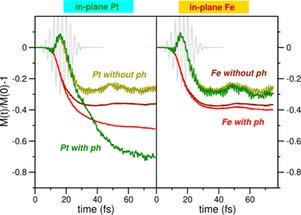
Fig.1 Normalized spin moment as a function of time (in fs) in laser pumped FePt. The moment is calculated in presence of phonon modes as well as in absence of any nuclear motion.
In my talk I will advocate a parameter free ab-initio approach to treating ultrafast light-matter interactions uncovering novel and hitherto unsuspected early time spin dynamics phenomena : (a) I will show that OISTR is one of the fastest ways to control spins by light and (b) I will make a case for femto- phono- magnetism by demonstrating that selective excitation of optical phonon modes exert a strong influence on femtosecond demagnetisation, generating an additionallossofmoment inlaserpumpedmaterials(seeFig.1). [1,2] [3]
In the second part of the talk I address the question of valley control in 2d transition metal dichalcogenides (TMDC), with current understanding that it couples exclusively via circularly polarized light. In our work we show that on femtosecond time scales valley coupling is a much more general effect. We find that two time separated linearly polarized pulses allow almost completecontrolovervalleyexcitation.
References:
[1] Dewhust et al., Nano Lett. 18, 1842 (2018).
[2] Siegrist et al. Nature 571, 240 (2019)
[3] Sharma et al. Sci. Advs. 8, eabq2021 (2022)
[4] Sharma et al. Optica 9 (8), 947-952 (2022)
18Magneticorderinanair-stablefrustratedvander Waalsmagnet

In this talk, I will describe the properties of an orthorhombic frustrated van der Waals magnet, CrOCl, that shows a wide variety of magnetic phases with magnetic cells much larger than the crystallographic cell. Together with a strong magneto-elastic coupling, this leads to pronounced zone folding effects in the phonon spectrum that provide a unique possibility to describe the Bfield induced phases using Raman scattering techniques. I will describe the cascade of magnetic phases that bulk CrOCl exhibits when it is subjected to an external magnetic field, before the spinsaturationatB=30T.
Finally, taking advantage of the weak van der Waals interlayer interaction, we can thin down these materials and I will describe from the view point of magneto-Raman scattering spectroscopy,thepropertiesofthinlayersofCrOCl,downtothemonolayerlimit.
19AmplificationofMagneto-OpticalActivityThrough PlasmonicModesHybridisation

We explore magnetoplasmonic-disk/plasmonic-ring nanocavities to achieve free-space light excitation and hybridization of multipolar modes. We show that the enhanced tunability and linewidth sharpening of Fano resonances in non-reciprocal metasurfaces made of periodic arrangements of such hybridized magnetoplasmonic nanocavities produce a large amplification of the magneto-optical response together with the control of reflectance (Kerr configuration) and transmittance (Faraday configuration), well beyond that achievable using conventional magneto-plasmonic nanostructures [1]
We found that the multipole composition of these hybrid eigenmodes result in a peculiar scattering directivity of electromagnetic waves leading to a vastly wider range and tuneability of collective lattice resonances when the nanocavities are arrange on periodic patterns.
Given the specific interest associated with the possibility to induce a strong coupling between collective lattice resonances and two-level systems, like quantum-emitters (QEs) , the here studied optical non-reciprocal metasurfaces may constitute an interesting candidate to control quantum-optical properties of light emitters integrated therein by enabling long-distance interaction between QEs and causing cooperative effects, including the QE entanglement [2] [3]
References:
[1] A. López-Ortega et al., “Enhanced magnetic modulation of light polarization exploiting hybridization with multipolar dark plasmons in magnetoplasmonic nanocavities”, Light: Science&Applications 9, 49 (2020).
[2] J. Straubel, R. Filter, C. Rockstuhl, and K. Słowik, “Efficient mode conversion in an optical nanoantenna mediated by quantum emitters”, Optics Letters 41, 2294-2297 (2016).
[3] P. K. Jha et al., “Metasurface-mediated quantum entanglement”, ACS Photonics 5, 971 (2018).
20Solid-statespinsasinterfacesfromstationary qubitstosinglephotonsforquantumcommunication technologies

Solid-state spins are promising as interfaces from stationary qubits to single photons for quantum communication technologies. Semiconductor quantum dots (QDs) have excellent optical coherence, exhibit near-unity collection efficiencies when coupled to photonic structures, and possess long-lived spins for quantum memory. In this talk, I will present our recent work on GaAs QDs, with which we have made breakthroughs in three directions. The first is the control and use of the nuclear spins as a quantum memory, together with an in-situ tuneable interaction with the electron-spin qubit. The second is the design of the optical and magnetic properties of QDs prior to growth. The third is the demonstration of high-fidelity quantum control of the electron spin in the Faraday geometry, as compatible with single-shot spin readout. Taken together, these results highlight the capabilities of GaAs QDs towards quantumcommunicationandcomputingapplications.
21PossibilitiesforNewMagneto-OpticMaterialsfor QuantumTechnologies

Advances in photonic and quantum technologies require materials with finely tuned optical, electronic, and structural properties. A new generation of engineered platforms, including oxide single crystals, III-V semiconductors, eutectic systems, and nanostructured glass composites, offersuniqueopportunitiestomeetthesedemands.
By combining precision crystal growth, micro- and nanofabrication, and materials-by-design strategies, we are developing functional materials with tailored light–matter interactions, enhanced stability, and scalable integration. These materials enable novel functionalities such as ultrafast photonic components, nanoscale data storage, tunable light sources, and quantum informationprocessing.
This talk will present current possibilities and future directions for materials, emphasizing how the integration of fundamental materials science with application-driven design can open new pathwaysfornext-generationphotonicsandquantumtechnologies.
22Europiummonoxideasamagneto-opticmaterial
M.J de Quidt[1], D Read [1,2], B Salmond [1], S.R Giblin [1], D.J Morgan [3], S Shutts[1,4] 1. School of Physics and Astronomy, Cardiff University, UK 2. University of California, USA 3. School of Chemistry Cardiff University, UK 4. Institute of Compound Semiconductors, Cardiff, UK

References: [1] F. Formisano, R. Medapalli, Y. Xiao, H. Ren, E. E. Fullerton, and A. V. Kimel, Femtosecond magneto-optics of EuO, Journal of and Magnetic Materials 502, 166479 (2020). [2] Kie Ahn and J. Suits, Preparation and properties of EuO films, IEEE Trans. Magn. Pintus et al., An integrated magneto-optic modulator for cryogenic applications, Nat Electron 5, 604 (2022). [4] H. Wu, W. Fu, M. Feng, Cryo-VCSELs Operated at 2.8 K and 40 K With Record Bandwidth, Power, and Linearity for Optical Data Links in Quantum Journal of Quantum Electronics 60, 1 (2024). [5] T. Mairoser et al., High-quality EuO thin films the easy way via topotactic transformation, 1 (2015).
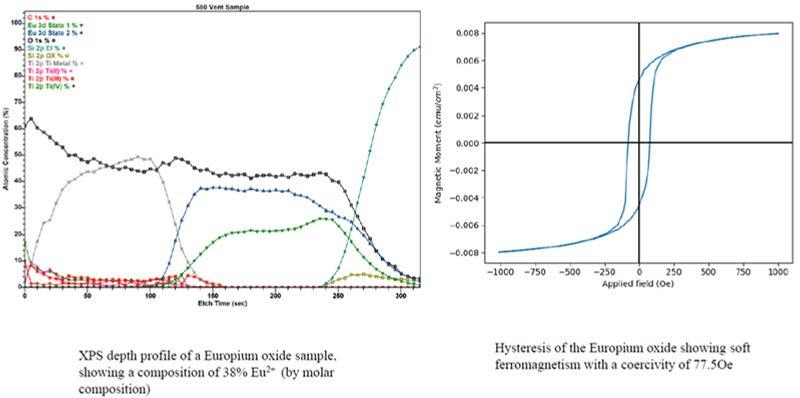
23Opticalcontroloftopologicalmagnetismin moirématerials

[1]
Understanding and controlling strongly correlated many-body spin systems is one of the key challenges in modern condensed matter physics. Among the most promising experimental platforms for these explorations are semiconducting moiré materials (SMMs), which consist of two twisted or lattice-mismatched transition metal dichalcogenide monolayers. Owing to their spin-valley-selective optical selection rules and the possibility of incorporating them into chargetuneable devices, SMMs uniquely enable direct optical access to the spin degree of freedom of correlated electrons, whose density can be controlled in-situ using transparent graphene gates. In this talk, I will review our recent ultra-low-temperature magneto-optical investigations of collective electronic magnetism in different types of SMMs. The particular focus will be on AAstacked MoTe2 homobilayers, where strong interlayer hybridization of hole orbitals gives rise to flat topological valence bands that support robust ferromagnetic metals as well as fractional and integer Chern insulators at various moiré lattice filling factors. I will show that the spin state of all these topological ferromagnets can be dynamically reversed by resonantly driving excitonpolaron resonances in the optical absorption spectrum with circularly-polarized light . This includes both integer and fractional Chern insulators, for which a spin orientation is equivalent to all-optical switching of their many-body Chern number. I will demonstrate that by illuminating the sample with a diffraction-limited spot, it is possible to induce such a Chern number flip in selected area of the sample, which paves the way for optical generation of programmable topological circuits.
References:
[1] O. Huber, (…), T. Smoleński, arXiv:2508.19063 (2025)
24Magneto-opticalstudiesoftopologicalmaterials

Infrared and THz magneto-spectroscopy are powerful experimental tools for studying various classes of topological materials. These techniques offer relevant insights into the electronic band structures of diverse topological crystals and are also frequently used to explore intriguing relativistic-like phenomena. In my talk, I will review recent progress in the field of infrared magneto-spectroscopy applied to topological materials and discuss selected results, including both in-house and collaborative research conducted at the high-field facilities in Grenoble’s laboratory. These investigations encompass: (i) bulk and surface states in three-dimensional topological insulators (Sb Te , ZrTe , and BiSbTe S ), with the latter showing peculiar cyclotron resonance absorption on surface electrons visible up to room temperature; (ii) magnetic dichroism induced by the Berry curvature in the antiferromagnetic topological insulator MnBi Te ; (iii) the optical band gap in a dispersive nodal-line in the NbAs Dirac semimetal, whose angle-dependence can be interpreted in terms of a Lorentz-boost-driven renormalization ;and(iv)theallegedmagneticWeylsemimetalEuCd As
References:
[1] I. Mohelsky et al., Phys. Rev. B 109, 165205 (2024).
[2] I. Mohelsky et al., Phys. Rev. B 107, L041202 (2023).
[3] I. Mohelsky et al., arXiv:2504.08420 (2025).
[4] S.-K. Bac et al., Phys. Rev. Lett. 134, 016601 (2025).
[5] J. Wyzula et al., Adv. Sci. 9, 2105720 (2022).
[6] D. Santos-Cottin et al., Phys. Rev. Lett. 131, 186704 (2023).
25Identificationandmanipulationofanodalline resonancebyhigh-fieldmagneto-optics

Topological magnets exhibit fascinating properties like protected surface states or anomalous transport phenomena. Theoretically, these effects can be significantly manipulated by the magnetic state. However, experimental verification of such predictions remains challenging, due to the necessity to obtain direct spectroscopic information about specificbands.InthistalkIhighlightthatmagneto-opticalspectroscopyisapowerfultoolto investigatetopologicalbandstructures.
On the example of the prominent kagome ferromagnet Co3Sn2S2, we identify a resonance between bands of a gapped nodal line by broadband magneto-optical Kerr effect measurements, which allow to pinpoint Berry curvature hotspots in the Brillouin zone that are responsible for the generation of the anomalous Hall effect. This approach also allows to separate its intrinsic and scattering contributions unambiguously. Furthermore, I demonstrate that the knowledge gained in these experiments can be used to monitor the manipulation of topological bands, as we observe a closing of the spin-orbit coupling induced band gap under high in-plane magnetic fields. This approach opens exciting avenuesforinvestigatingmaterialswithcomplexmagneticstructuresandeventostudythe interplayofreal-andmomentum-spacetopologicalstates,e.g.inskyrmion-latticesystems.
26Manipulatingofmagnetismandmagnetoopticalpropertiesof2DvanderWaals heterostructures

Two-dimensional (2D) ferromagnets have great potential applications in spintronic devices. Critical temperature, exchange bias, and magnetic signal strength are key parameters for their application. To enhance the magnetism of 2D itinerant ferromagnets and amplify the emergence of new physical phenomena, different kinds of interface engineering techniques were utilized to modulate the magnetism of 2D ferromagnets, here, Fe GeTe (FGT) was selected as an example. The following are some interesting results: 1) More than 30 K of Tc improvement and nearly ~100% enhancement of coercive field have been observed in FePS /FGT heterostructure due to the proximity magnetic coupling effect. 2) Nearly 4 times of exchange bais field enhancement and 90 K of block temperature improvement have been obtained in FePSe /FGT heterostructures. 3) Nonlocal enhancement of Coercive field and exchange bias have been observed in bare FGT area in MPX /FGT heterostructures. 4) Topological Magneto-optical effect from skymions in FGT devices were first observed in FGT flakes. These works not only help us understand the interface related novel phenomena and physics in FGT heterostructures, but also provide powerful methods to manipulate magnetism and magneto-optical properties of 2D magnetic materials and their heterostructures.

References:
Fig. 1 Schematic illustration of magnetism modulation in twodimensional Fe3GeTe2 via interface engineering. (a) Schematic diagram of interface engineering based on Fe3GeTe2. (b) Interface induced enhancement of coercive field in MPX3/Fe3GeTe2. (c) Improvement of exchange bais and block temperature Tb. (d) Topological Magneto-optical effect observed FGT device.
[1] T. Song, X. Cai, M. W. Tu, et al., Giant tunneling magnetoresistance in spin-filter van der Waals heterostructures. Science 360, 1214, 2018. [2] C. Gong, X. Zhang, Two-dimensional magnetic crystals and emergent heterostructure devices. Science363, eaav4450, 2019. [3] Q. H. Hao, H. W. Dai, M. H. Cai, et al., 2D Magnetic heterostructures and emergent spintronic devices. Adv. Electron. Mater. 8, 2200164, 2022. [4] L. M. Zhang, X. Y. Huang, H. W. Dai, et al., Proximity-coupling-induced significant enhancement of coercive field and Curie temperature in 2D van der Waals heterostructures. Adv. Mater. 32, 2002032, 2020.[5] X. Y. Huang, L. M. Zhang, L. Tong, et al., Manipulating exchange bias in 2D magnetic heterojunction for high-performance robust memory applications. Nat. Commun. 14, 2190, 2023. [6] H. W. Dai, M. H. Cai, Q. H. Hao, et al., Nonlocal manipulation of magnetism in an itinerant two-dimensional ferromagnet. ACS Nano16, 12437, 2022. [7] M. H. Cai, Q. H. Hao, J. Liu, et al., Topological magneto-optical effect from skymions in two-dimensional ferromagnets. ACS Nano18, 20055, 2024. [8] H. J. Chen, Y. T. Xing, X. Wang, et al., Electrical control of exchange bias in Fe GaTe /Fe GeTe van der Waals heterostructures. Appl. Phys. Lett. 126, 011901, 2025. [9] M. H. Cai, Q. H. Hao, H. J. Chen, et al., Highly efficient room-temperature nonvolatile magnetization switchingin2DvanderWaalsferromagnetFe GaTe .ACSAppl.Mater.&Interfaces17,24031,2025. 3 2 3 2 3 2
27All‐opticalcontrolofspinsinvanderWaals magnets

Recently discovered two‐dimensional (2D) van der Waals (vdW) magnets offer new opportunities for controlling magnetism via mechanisms such as strain, voltage, and twistronics. Ultrafast laser pulses provide the fastest means of manipulating magnetic properties, yet their effects on spins in 2D magnets remain largely unexplored. In this talk, I will discuss all‐optical controlofthe2DvdWferromagnetsCrI3 andCr2Ge2Te6 . [1] [2,3]
Our research shows that integrating a thin CrI3 flake with a monolayer of transition metal dichalcogenide WSe2 enables both helicity‐dependent and helicity‐independent all‐optical switching (AOS) down to a single laser pulse . I will also demonstrate that optical pumping can lead to formation of various spin textures, including reversible transformations between stripe and bubble/skyrmion phases in Cr2Ge2Te6 . Finally, I will discuss thickness dependent remagnetization dynamics in Cr2Ge2Te6 observed via time‐resolved beam‐scanning Kerr microscopy . Our findings reveal that reducing the thickness of the 2D magnet enhances heat dissipation to the substrate, significantly shortening the magnetization recovery time from severalnanosecondstoafewhundredpicoseconds. [1] [2] [3]
References:
[1]M.Dąbrowski,etal.Nat.Commun.13,5976,(2022).
[2]M.Khela,M.Dąbrowski,etal.Nat.Commun.14,1378(2023).
[3]M.Dąbrowski,etal.Nat.Commun.16,2797,(2025).
28DirectMagneto-OpticalEvidenceforKitaev
InteractionsinthevanderWaalsMultiferroicNiI2

Magneto-optical spectroscopy provides a powerful probe of collective excitations in quantum magnets. We present transmission, Faraday rotation, and magnetic circular dichroism measurements on the van der Waals multiferroic NiI₂, revealing two electromagnon modes with opposite chirality at 34 and 37 cm ¹. Unlike conventional spin-helical descriptions, these excitations blueshift with applied magnetic field yet remain isotropic with respect to field orientation. By modelling the system with a Kitaev-based spin Hamiltonian including in-plane anisotropy, we demonstrate that the observed zero-field splitting, and field evolution originate from bond-dependent interactions. Faraday rotation up to 80 mrad and strong circular dichroism directly evidence inverse chirality between the modes, validating the Kitaev frameworkoverhelicalmodels.OurresultsestablishNiI₂asaplatformwhereKitaevinteractions drive chiral magnon excitations, connecting multiferroicity, anisotropy, and topology in a triangularvanderWaalsmagnet.

29Interlayerexcitonlocalisationandmoiréexciton
detrappingprobedbymagneto-photoluminescence
spectroscopy
intwo-dimensionalheterostructures
Elena Blundo, Federico Tuzi, Salvatore Cianci, Marzia Cuccu, Giorgio Contestabile, Antonio Miriametro, Marco Felici, Antonio Polimeni Physics Department, Sapienza University of Rome, Italy
Katarzyna Olkowska-Pucko, Lucja Kipczak, Adam Babinski, Maciej R. Molas Faculty of Physics, University of Warsaw, Poland
Giorgio Pettinari Institute for Photonics and Nanotechnologies, National Research Council, Rome, Italy
Takashi Taniguchi, Kenji Watanabe National Institute for Materials Science, Tsukuba, Japan
Moiré excitons (MXs) are electron-hole pairs localised by the periodic (moiré) potential forming in two-dimensional heterostructures (HSs). MXs in transition metal dichalcogenide (TMD) HSs can been exploited, e.g., for creating nanoscale-ordered quantum emitters [1], or for the formation of Bose-Einstein condensates and highly correlated exciton states [2]. In all instances, the thermal stability of the moiré-induced confinement of the excitons plays a crucial role and a fundamental question arises: Up to what extent can MXs be regarded as truly moiré-confined? In this talk, we address this crucial aspect by discussing the effects of the lattice temperature and of the photo-generated exciton density on the localisation of interlayer excitons (in which electron and hole lie in the two different constituent TMDs of the HS) by the moiré potential. By focusing on MoSe /WSe HSs, we show that MXs de-trap from the moiré potential and turn into free interlayer excitons for temperatures above 100 K and unveil at cryogenic temperatures the presence of electron-hole pairs localised in different minima of the moiré potential featuring different local atomic registry [3]. Acknowledgments: This work has received funding by the European Union’s EIC Pathfinder Open 2024 under grant agreement 101186642 (VALERIA).
[1] H. Yu et al., Moiré excitons: From programmable quantum emitter arrays to spin-orbit-coupled artificial lattice, Sci. Adv. 3, e1701696 (2017)
[2] Z. Wang et al., Evidence of high-temperature exciton condensation in two-dimensional atomic double layers, Nature 574, 76 (2019)
[3] E. Blundo et al., Localisation-to-delocalisation transition of moiré excitons in WSe2/MoSe2 heterostructures, Nat. Commun. 15, 1057 (2024)
30Magneto-OpticalProbingofExcitonicStatesupto 600T

Hydrogen-likesystemsinultra-highmagneticfieldsareofsignificantinterestininterdisciplinary research.Previousstudieshavefocusedontheexcitonwavefunctionshrinkageundermagnetic fields down to artificial crystal lattices (e.g., quantum wells, superlattices), where the effective mass approximation remains valid. However, further compression toward the natural crystal latticescaleremainsexperimentallychallenging.
In this presentation, I will report our recent magneto-absorption measurements on the yellowexciton series in Cu O using electromagnetic flux compression (EMFC) to generate field of up to 600 T. The strong low energy absorption features are assigned to the spin Zeeman split 2p and 3p exciton states, as shown in Fig. 1. The high field data provides a value for the reduced effective mass of the exciton . Intriguingly, the broadening of the 2p ground state transition exhibits a sudden increase for ultrahigh magnetic fields above 300 T, providing possible evidence for Harper broadening – an indication of the breakdown of the effective mass approximation when the magnetic length becomes comparable to the lattice constant of the crystal.


Energies for and excitonic absorption as a function of applied magnetic field at 45 K.

Fig.1
Thank you all for joining us at the MagnetoOptics in Quantum Light and Matter conference. Your presence, enthusiasm and active participation are keyinmakingthiseventavibrantforum for discussing advancements in magneto-optics, quantum light and matter,andlight-matterinteractions.We hopetheinsightsyougain,connections you make and ideas sparked during the talksandpostersessionswillcontinueto fuel your research and collaborations in themonthsahead.
Ifyouwouldbeinterestedinhostingthe next edition of this conference— providing a venue, shaping the programme or bringing together this community—please feel free to reach out to Dr. Luke Nicholls at Quantum DesignUK&Ireland.Welookforwardto hearing from you and thank you once again for contributing to a successful andinspiringmeeting.
Dr.LukeNicholls: luke@qd-uki.co.uk



